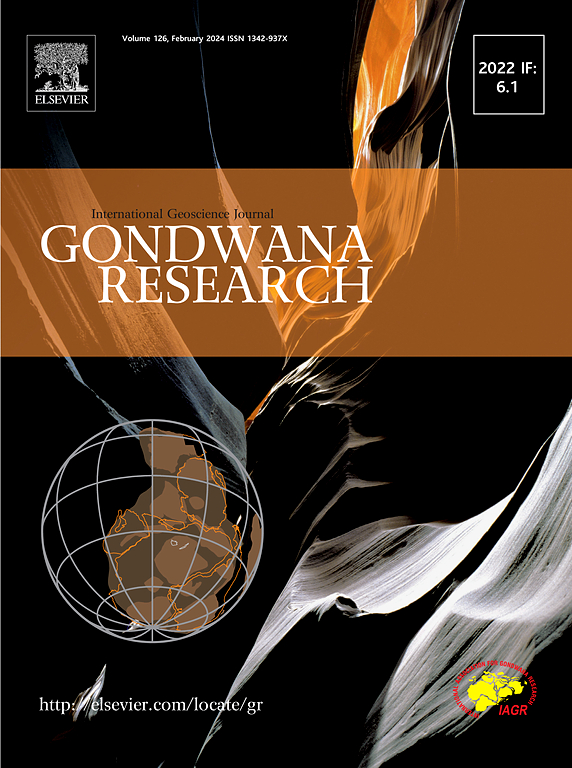气候变化的探测、归因和建模:关键的开放性问题
IF 7.2
1区 地球科学
Q1 GEOSCIENCES, MULTIDISCIPLINARY
引用次数: 0
摘要
耦合模式比对项目(CMIP)全球气候模式(GCMs)评估,1850-1900年和2011-2020年间观测到的全球地表变暖几乎100%应归因于温室气体排放等人为驱动因素。这些模型还基于共享的社会经济路径(ssp)生成未来气候预测,有助于风险评估和制定代价高昂的“净零”气候缓解战略。然而,正如本研究所讨论的,CMIP GCMs在归因和模拟气候变化方面面临着重大的科学挑战,特别是在捕捉整个全新世多个时间尺度的自然气候变率方面。其他关键问题包括全球地表温度记录的可靠性、太阳辐照度模型的准确性以及气候敏感性估计的稳健性。由于未校正的非气候偏差,全球变暖估计可能被高估,而gcm可能大大低估了太阳和天文对气候变化的影响。对辐射强迫的平衡气候敏感性(ECS)可能低于通常的假设;实证结果表明,ECS值低于3°C,甚至可能接近1.1±0.4°C。结合自然变率的经验模型表明,即使在不需要净零排放政策的SSP情景下,21世纪的全球变暖也可能保持温和。这些发现提出了关于实施积极的气候减缓战略的必要性和紧迫性的重要问题。虽然gcm仍然是气候研究和政策制定的重要工具,但其科学局限性强调需要更精细的建模方法,以确保准确的未来气候评估。解决与气候变化探测、自然变率、太阳影响和气候对辐射强迫敏感性有关的不确定性,将加强预测并更好地为可持续气候战略提供信息。本文章由计算机程序翻译,如有差异,请以英文原文为准。
Detection, attribution, and modeling of climate change: Key open issues
The Coupled Model Intercomparison Project (CMIP) global climate models (GCMs) assess that nearly 100% of global surface warming observed between 1850–1900 and 2011–2020 should be attributed to anthropogenic drivers like greenhouse gas emissions. These models also generate future climate projections based on shared socioeconomic pathways (SSPs), aiding in risk assessment and the development of costly “Net-Zero” climate mitigation strategies. Yet, as this study discusses, the CMIP GCMs face significant scientific challenges in attributing and modeling climate change, particularly in capturing natural climate variability over multiple timescales throughout the Holocene. Other key concerns include the reliability of global surface temperature records, the accuracy of solar irradiance models, and the robustness of climate sensitivity estimates. Global warming estimates may be overstated due to uncorrected non-climatic biases, and the GCMs may significantly underestimate solar and astronomical influences on climate variations. The equilibrium climate sensitivity (ECS) to radiative forcing could be lower than commonly assumed; empirical findings suggest ECS values lower than 3 °C and possibly even closer to 1.1 ± 0.4 °C. Empirical models incorporating natural variability suggest that the 21st-century global warming may remain moderate, even under SSP scenarios that do not necessitate Net-Zero emission policies. These findings raise important questions regarding the necessity and urgency of implementing aggressive climate mitigation strategies. While GCMs remain essential tools for climate research and policymaking, their scientific limitations underscore the need for more refined modeling approaches to ensure accurate future climate assessments. Addressing uncertainties related to climate change detection, natural variability, solar influences, and climate sensitivity to radiative forcing will enhance predictions and better inform sustainable climate strategies.
求助全文
通过发布文献求助,成功后即可免费获取论文全文。
去求助
来源期刊

Gondwana Research
地学-地球科学综合
CiteScore
12.90
自引率
6.60%
发文量
298
审稿时长
65 days
期刊介绍:
Gondwana Research (GR) is an International Journal aimed to promote high quality research publications on all topics related to solid Earth, particularly with reference to the origin and evolution of continents, continental assemblies and their resources. GR is an "all earth science" journal with no restrictions on geological time, terrane or theme and covers a wide spectrum of topics in geosciences such as geology, geomorphology, palaeontology, structure, petrology, geochemistry, stable isotopes, geochronology, economic geology, exploration geology, engineering geology, geophysics, and environmental geology among other themes, and provides an appropriate forum to integrate studies from different disciplines and different terrains. In addition to regular articles and thematic issues, the journal invites high profile state-of-the-art reviews on thrust area topics for its column, ''GR FOCUS''. Focus articles include short biographies and photographs of the authors. Short articles (within ten printed pages) for rapid publication reporting important discoveries or innovative models of global interest will be considered under the category ''GR LETTERS''.
 求助内容:
求助内容: 应助结果提醒方式:
应助结果提醒方式:


